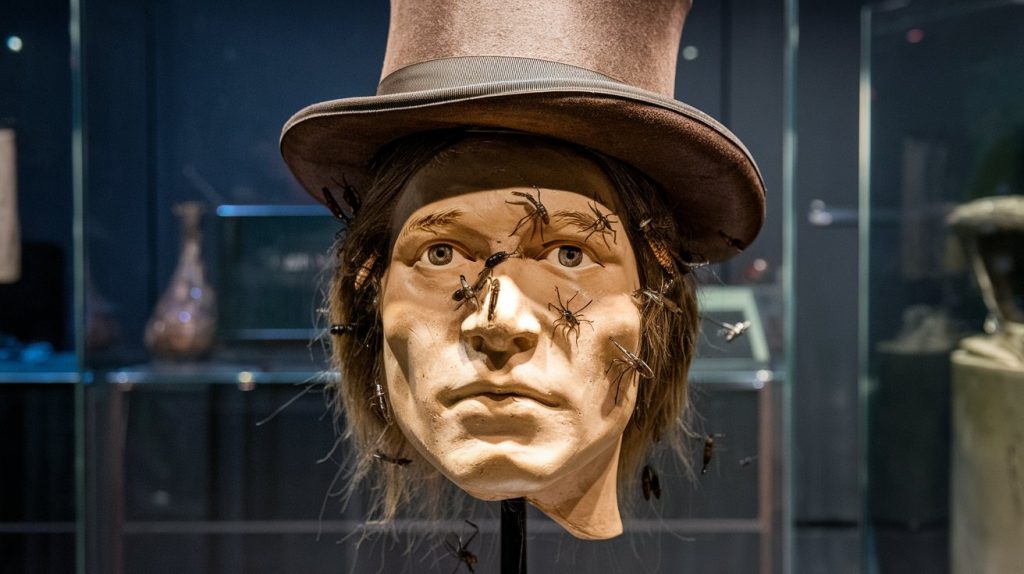Table of Contents
“Can you taxidermy a human?” It’s a question that piques interest, prompts discussions about morality, and even causes discomfort. Whether from a fascination with preserving life or simply exploring the boundaries of what’s possible, this topic delves deep into unusual territory. In this article, we’ll explore astonishing insights into the world of taxidermy, specifically focusing on human beings. Is it legal? Is it ethical? And most importantly, can it be done?
What Is Taxidermy?

Taxidermy is preserving an animal’s body, typically for display or study. Skilled taxidermists use a combination of skinning, stuffing, and mounting to make the subject look as lifelike as possible. While most people associate taxidermy with animals like deer, birds, or fish, human taxidermy has fascinated some for years.
But here’s the question: Can you taxidermy a human? While the process might be similar, the implications and challenges surrounding human taxidermy make it a very different story.
Historical Fascination with Human Preservation
Throughout history, humans have been fascinated with preserving the body after death. From ancient Egyptian mummification to modern embalming techniques, people have sought ways to honor the dead and keep their memory alive. But does this mean that taxidermy could be the next step in human preservation? Some may argue that “Can you taxidermy a human?” isn’t so far-fetched when viewed through history.
Legal and Ethical Considerations
Taxidermy is legal for animals, but what about humans? Human taxidermy is not allowed in most countries due to legal and ethical concerns. Laws surrounding the treatment of human remains are strict, focusing on dignity and respect for the deceased. So, while the technical answer to “Can you taxidermy a human?” “Yes, in theory, but in practice, it’s usually forbidden.”
Ethical Dilemmas of Human Taxidermy
The ethical questions surrounding human taxidermy are complex. Many believe that preserving a human body in this way could be seen as disrespectful or even grotesque. Others might argue that if it’s the individual’s wish, they should be free to decide what happens to their body. The debate over “Can you taxidermy a human?” touches on issues of consent, dignity, and the treatment of human remains.
How does human taxidermy work?
Human taxidermy would follow a similar process to animal taxidermy for those curious about the mechanics. The skin would be carefully preserved, while the internal organs would be removed. However, the difference lies in the skill and care required for human taxidermy due to the need for precise and lifelike results. But the question remains: Can you taxidermy a human without crossing moral and legal boundaries? It’s a gray area that few are willing to explore.
Why the fascination?
Why do people even ask, “Can you taxidermy a human?” The urge to investigate the unknown or push the limits of science and art is frequently the source of this topic’s attraction. Some might view human taxidermy as a way to immortalize a loved one, while others may see it as a morbid curiosity. Regardless of the reasons, the question has captured the imaginations of many.
Alternatives to Human Taxidermy

There are alternatives to human taxidermy for those intrigued by the idea but turned off by the ethical and legal implications. Embalming, for instance, is a widely accepted practice that allows for temporary body preservation. Additionally, techniques like cryonics or plastination offer other ways to preserve the body after death without stepping into the controversial territory of taxidermy.
Plastination: A Scientific Approach
Plastination is one alternative that has gained popularity in recent years. It’s a method of preserving bodies by replacing water and fat with certain plastics. This creates a dry, odorless, and durable specimen. Although not the same as taxidermy, plastination offers a way to preserve the human form for educational purposes without the ethical dilemmas associated with taxidermy. So, while asking, “Can you taxidermy a human?” might stir up controversy, plastination offers a less contentious option.
Public Perception and Media Influence
The media often fuels the curiosity surrounding “Can you taxidermy a human?” Movies, television shows, and books sometimes sensationalize the idea, leading people to believe that human taxidermy is not only possible but more common than it is. Human taxidermy is sporadic, if it does not exist at all.
The Role of Art and Culture
In some cases, “Can you taxidermy a human?” arises from artistic curiosity. Artists have long pushed boundaries, and some have explored preserving the human body as a form of expression. While this might seem far-fetched to some, it raises interesting questions about how we view the human body in both life and death. Click here for more information about Entertainment.
So, can you taxidermy a human? While the concept might seem possible from a technical standpoint, the legal, ethical, and societal barriers make it highly unlikely. Human taxidermy exists more in the realm of curiosity and fiction than reality. However, the fascination with preserving the human body in unconventional ways continues to thrive.




